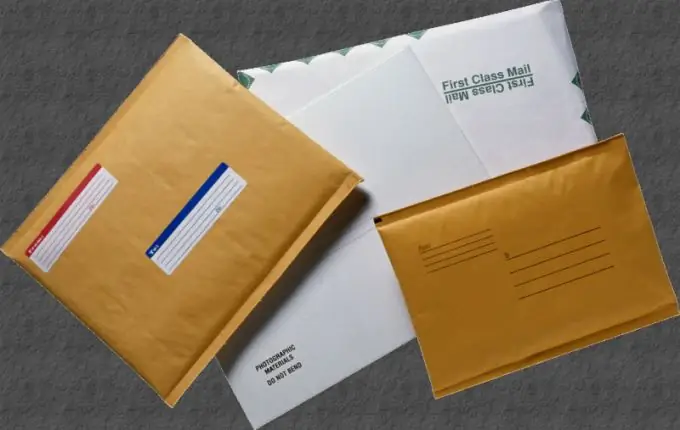Outbound documentation is the official letter that the organization sends to third-party addressees (suppliers, consumers, regulatory authorities, etc.) or colleagues from other cities. As a rule, two employees share responsibility for handling this correspondence: the compiler and the clerk. The first is responsible for preparing and agreeing on the text. The second registers the letter, sends the original to its destination and stores a service copy.

Necessary
- - company's Form;
- - the computer on which the text editor is installed;
- - log of registration of outgoing documentation.
Instructions
Step 1
If you are a compiler
Prepare a draft document. Outgoing letters can be proactive and responsive. In the first case, you start (initiate) correspondence with another organization or a specific person on any official issue. The response letter must contain information corresponding to the request received.
Step 2
Print the letter in duplicate on your organisation's letterhead. Make sure that the upper part of the document, the so-called "header", is formatted correctly. In addition to the details of the company, located on the form on the right, it includes the addressee's data and the header of the letter.
Step 3
In the upper left corner, type the title, initials and surname of the person to whom the document is intended, the address of an organization or individual. The procedure for specifying information should be exactly the same, for example:
"General Director of LLC" Volna"
I. I. Sidorov
Rabochaya st., 37, office fourteen, Saratov, 109235.
Step 4
On the right, under the details of your organization, place the title of the letter. It should be short, clearly reflecting the content of the text. For example: "On conducting a scheduled inspection of the sanitary state of a building" or "On providing information about houses in need of major repairs."
Step 5
Start the main text by addressing the addressee and specifying the reason for which this letter is sent to him. For example: “Dear Ivan Ivanovich! We inform you about a scheduled inspection of the sanitary condition of the rented building on January 14, 2011”.
Step 6
If there are attachments to the outgoing document, list them after the main text, for example: “Attachment on 3 pages. in 1 copy. At the very bottom of the last page of the text, the originator of the document should be indicated. As a rule, the author of the letter types his last name, initials and work phone smaller than the main font.
Step 7
Check the letter with the decision-makers in your organization in any direction. For example, documents involving the expenditure of funds are endorsed by an accountant, and answers to a request from the tax office are signed by a lawyer. Employees of the organization who approve the letter put their personal signatures with a transcript on the second copy at the end of the text, below the place for the head's visa. After receiving the necessary approvals, the outgoing document is signed by the head of the organization.
Step 8
Submit the agreed and signed document to the clerk. If you want to keep a copy, print an additional copy. Ask the clerk to put an outgoing number on it.
Step 9
If you are a clerk
Accept the outgoing letter from the originator. Check the availability and correctness of the main details, approval visas, information about the creator and the signature of the manager. Pay attention to the presence of attachments to the letter.
Step 10
Record the information about the document in the outgoing mail log. If your organization has switched to electronic document management, proceed in accordance with the instructions for maintaining the database. There are no strict registration rules for a traditional paper logbook. However, in practice, a table with the following columns is most often used:
- the date;
- number of the outgoing document;
- addressee;
- summary (title);
- the originator of the document;
- note.
Step 11
The outgoing number is formed as follows. First, specify the stock list number of the folder where copies of outgoing messages are stored. Write the serial number of a particular letter through a dash or a slash. You will get: "01-14-256" or "01-14 / 256", where 01-14 is the case number, 256 is the document number.
Step 12
Enter the outgoing number in the special line of the form. For a reply letter, be sure to also indicate the number of the incoming document with which it is associated. Seal the first copy of the letter (without approval visas) in an envelope and send it to the addressee. File a copy of the document in the appropriate file folder.






